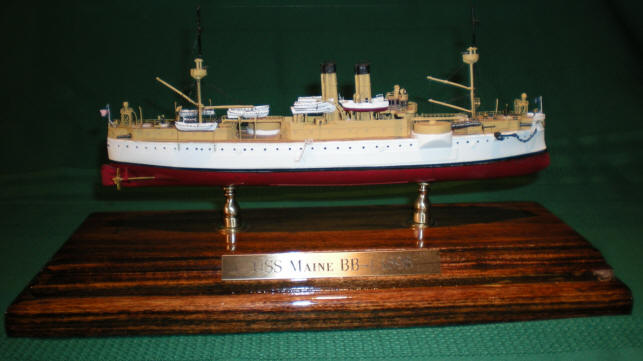totalnavy.com
Online Resource for all things Navy
Totalnavy.com is also the parent Company for americanmilitaryswords.com
132 Prospect Ave, Woodmere, NY 11598
Phone: 718-471-5464 Email click here Fax 718-337-7115
TOLL FREE: 800.845.1140
Totalnavy.com is also the parent Company for americanmilitaryswords.com
132 Prospect Ave, Woodmere, NY 11598
Phone: 718-471-5464 Email click here Fax 718-337-7115
Our Customer Service is open weekdays from 9:00 am to 8:30 pm EST time. Call us if you need help. 718-471-5464
We ship to all US Military Theatres of Operations, all Bases, all APOs and all FPOs. We will match or beat any internet price!
 >> We accept Gov. Credit Cards - If you are having issues with the site, call in order by phone toll free: 800 - 845-1140
>> We accept Gov. Credit Cards - If you are having issues with the site, call in order by phone toll free: 800 - 845-1140
NO SALES TAX For the Military & Schools <<

"Remember the Main!"
This 1/350 scale model kit comes complete with a full resin hull, pieces, instructions, painting guide and photoetch parts, everything needed to build a historically accurate model. By Iron Shipwrights, sold by TotalNavy. Display stand not included.
Approximately 11" long
NOTE: Advanced skills needed, if you have never built a resin model kit, you will need this book.
Model in photo built by James Coleman.
The Spanish-American War (21 April to 13 August 1898) was a turning point in the history of the United States, signalling the country's emergence as a world power. The blowing up of the battleship USS Maine in Havana harbor on the evening of 15 February was a critical event on the road to that war. In order to understand the role the ship's destruction played in the start of the war, one must know the context in which the event took place.
Tensions between Spain and the United States rose out of the attempts by Cubans to liberate their island from the control of the Spanish. The first Cuban insurrection was unsuccessful and lasted between 1868 and 1878. American sympathies were with the revolutionaries, and war with Spain nearly erupted when the filibuster ship Virginius was captured and most of the crew (including many American citizens) were executed. The Cuban revolutionaries continued to plan and raise support in the United States.
The second bid for independence by Cuban revolutionaries began in April 1895. The Spanish government reacted by sending General Valeriano Weyler y Nicolau with orders to pacify the island. The "Butcher," as he became known in the U.S., determined to deprive the rebels of support by forcibly reconcentrating the civilian population in the troublesome districts to areas near military headquarters. This policy resulted in the starvation and death of over 100,000 Cubans. Outrage in many sectors of the American public, fueled by stories in the "Yellow Press," put pressure on Presidents Grover Cleveland and William McKinley to end the fighting in Cuba. American diplomacy, along with the return of the Liberal Party to power in Spain, led to the recall of General Weyler. However, beset by political enemies at home, the new Spanish government was too weak to enact meaningful reforms in Cuba. Limited autonomy was promised late in 1897, but the U.S. government was mistrustful, and the revolutionaries refused to accept anything short of total independence.